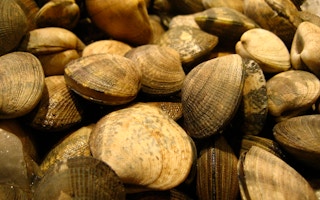It can be hard being a junior part of seabed life – a young starfish, say, or an adolescent worm. Down in the ocean depths, the environment is conspiring against you.
Marine biologists have just identified – and explained – a climate change paradox: while most fish are migrating towards the poles as the world’s oceans warm, one part of a potentially valuable commercial fishery is heading in the wrong direction – and perhaps to extinction.
Why? Once again, the finger of suspicion points to global climate change, and its impact on ocean tides and currents.
Throughout this century, researchers have repeatedly confirmed a pattern of ocean warming – and acidification – driven by ever-rising ratios of carbon dioxide in the atmosphere; a pattern that could affect both established commercial fishing industries and ocean life as a whole.
Tropical fish have been shifting away from the equator; further north and south, pelagic (open-ocean) and demersal (seabed-dwelling) fish have been seeking more suitable grounds. Warmer seas can affect spawning patterns.
But the ocean is a vast living space, and the speed at which it warms tends to vary with depth.
US researchers report in the journal Nature Climate Change that they worked through 60 years of data on 50 species of benthic invertebrates – creatures without backbones that dwell on the sea floor – to find that the populations of four-fifths of these had begun to disappear from the shelves and fishing grounds of the Georges Bank and the outer shelf that runs from New Jersey and east of the Delmarva Peninsula occupied by the states of Delaware, Maryland and Virginia.
More to the point, they identified the mechanism that had begun to limit life on the submarine sediments. Bottom-dwellers – shellfish, snails, starfish, worms and so on – can’t migrate: they are stuck where they are. But their larvae can, and at spawning time the infant shellfish are at the mercy of the ocean currents.
The waters of the north-east Atlantic coast are warming at three times the global average rate. Warming has affected the time at which benthic invertebrates spawn. Because the larvae appear earlier in spring and summer, they are swept away by currents they would not encounter in a cooler, more stable world.
And these currents, driven by river discharge and seasonal winds, tend to bring them south-west and inshore, where waters are warmer and the larvae are even less likely to survive.
Nowhere to go
Those adults that remain are stuck where they are: as the seas continue to warm, spawning times will get ever earlier and the currents will sweep many of the next generation to oblivion.
These bottom-dwelling denizens could survive, if they could colonise cooler waters. Instead they are condemned to a submarine version of what terrestrial biologists call the elevator to extinction: on land, hotter temperatures drive birds and butterflies and plants ever further uphill: in the end, nearer the summit, there’s nowhere to go.
The researchers, from Rutgers University in New Brunswick, call it the downwelling effect, and identify a paradox: as the area habitable by bottom-dwellers gets bigger, their ranges dwindle.
The finding so far is true only for the north-east Atlantic waters, and some species seem less affected. Scallops could flourish, because they spawn at a wider range of temperatures. But clams and mussels are adapted to low temperatures, and their ranges have warmed and contracted.
And, the scientists warn, as global heating reduces yields from traditional fisheries, the seafood industry is likely to rely increasingly on shellfish. But this industry, too, is vulnerable to ocean change.
This story was published with permission from Climate News Network.

















